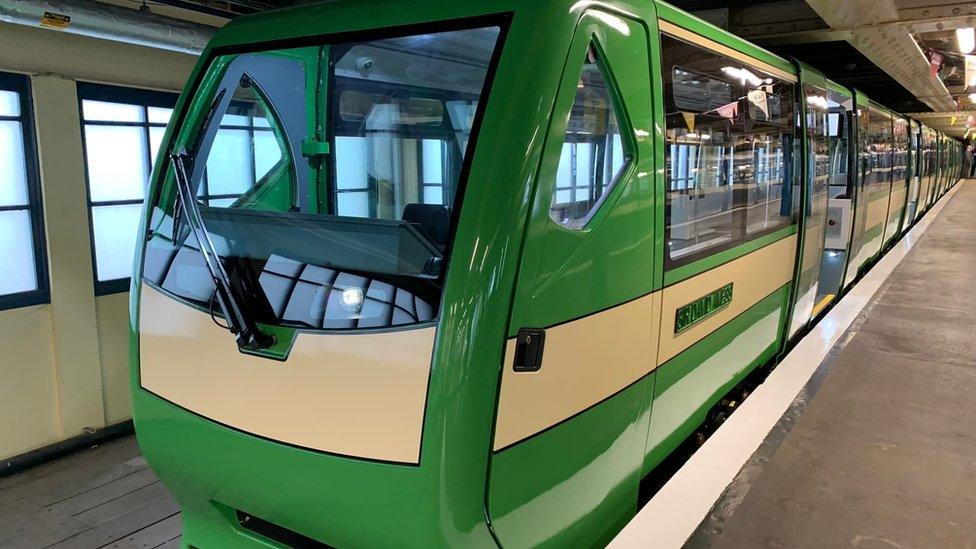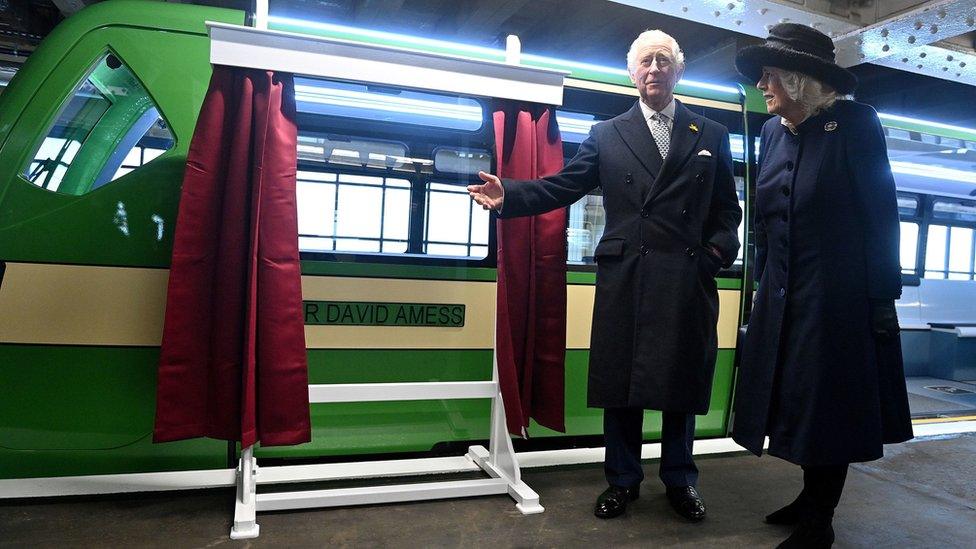Southend Pier train returns to service after doors failure
- Published

The train, named after Sir David Amess, was taken out of action in April
A pier train named after Sir David Amess has returned to service five months after a technical problem left passengers trapped inside.
The electric train was one of two "state-of-the-art" eco-friendly vehicles installed as part of a £3.5m investment for Southend city and pier.
The train was taken out of action in April after the doors failed to open.
"An intense period of safety tests and checks" followed, Southend City Council said.
Southend Pier Railway is a 3ft (914 mm) narrow gauge railway that runs along most of the 1.34-mile (2.16km) length of the world's longest pleasure pier.
The train, named after the late Southend West MP, began carrying passengers in April but was taken out of service after the doors failed on 25 April.
Passengers and onlookers had to work together to prise open the doors of a carriage when the train reached the end of the pier.

Sir David Amess championed the bid to make Southend a city
Councillor Martin Terry, cabinet member for community safety, said the work to get the train back in action had "certainly taken longer than we hoped".
"The team have been working tirelessly to deliver this project and overcome every obstacle," he said.
"With technology as advanced and unique as this, it has been important for the council to adopt a safety-first approach and get this right.
"We are frustrated that we have not been able to get them up and running this summer, but now we can look forward to riding the new trains and I'm sure many people will welcome and be able enjoy them for many years to come."

The then Prince Charles and Camilla, Duchess of Cornwall unveiled the train in March
The council said the delay was due to the new technology working with the old pier.
"The new technology has had a lot to contend with, with engineering plans having to tackle challenges including the length and age of the pier structure, salt from the sea and constant damp affecting the tracks and undercarriages, and ensuring these aspects are included in testing phases," the council said.
"This meant that due to the unique nature of these trains, tests could only be carried out in-situ, whereas most mainland trains typically carry out testing over a long period and out of sight of the public."
The council said the alterations and repairs were of no additional cost, as work was carried out under the existing contract agreement.
A second electric train, called the William Bradley, is expected to join the Sir David Amess train in service within the next couple of weeks, the council said.

Find BBC News: East of England on Facebook, external, Instagram, external and Twitter, external. If you have a story suggestion email eastofenglandnews@bbc.co.uk, external
Related topics
- Published1 March 2022

- Published28 April 2022
